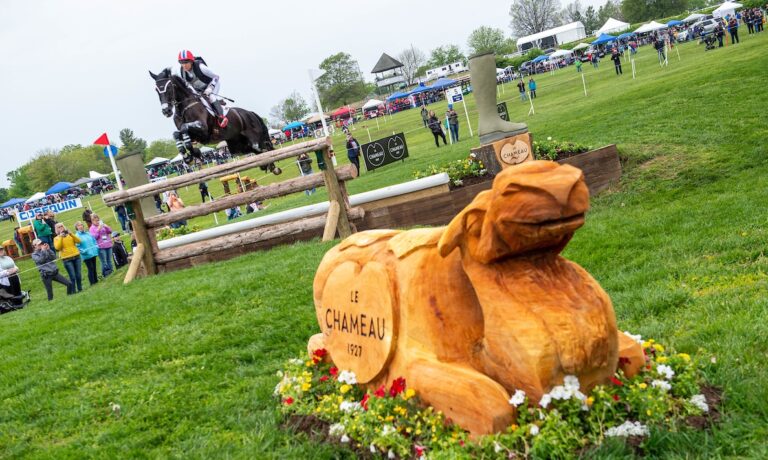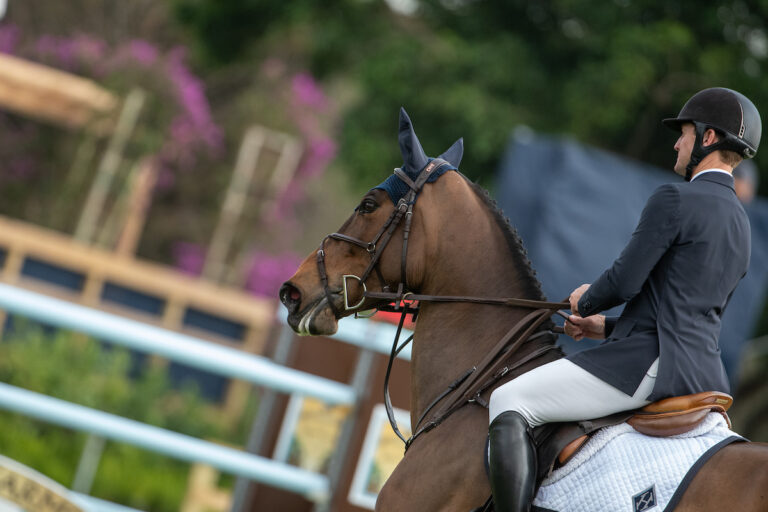Read award-winning journalist Nancy Jaffer’s latest report on the world of equestrian sport. Brought to you by Practical Horseman magazine. Visit Nancy’s archive for past columns.
December 22, 2009 — The question of drug use in competition horses, one of the biggest issues in equestrian sports, keeps jumping up like a querulous jack-in-the-box. Every time it appears to be contained, something happens that pops it back into the limelight.
Maybe you’re tired of hearing about it–after all, you don’t “drug” your horse. But do you medicate him? The word drugs covers more than evil “doping” to gain an unfair edge. Everyone who competes should be concerned about this issue, unless you only enter shows not recognized by the U.S. Equestrian Federation (USEF). In that case, you have another problem, since the fairness of the competition is in question. Without drug testing, participants have carte blanche to cover flaws from lameness to poor temperament with any variety of substances, while you take the high road without unsportsmanlike advantages.

But USEF’s mission to assure “a level playing field” at its shows comes with its own set of tribulations. It seems that practically anytime there’s a proposal to change the drug and medication rules, there’s also a groundswell of opposition. So here we go again.
At its annual convention in St. Petersburg, Fla., this month, the U.S. Hunter Jumper Association (USHJA) took a firm stand against new restrictions on the use of nonsteroidal anti-inflammatory drugs (NSAIDs) in competition (read my postcard from the meeting here).
Currently, the USEF allows administration of two NSAIDs simultaneously within certain limits, as long as phenylbutazone (bute) and Banamine are not used together. But Dr. Kent Allen, chairman of both the USEF’s veterinary committee and its drugs and medications panel, contends that habitual use of any two of the permitted NSAIDs is harmful, and wants exhibitors to be limited to the use of a single NSAID in competition.
“It’s a welfare of the horse issue,” he maintained, contending colitis and other problems are related to over-use of NSAIDs.
“It’s a form of abuse people don’t see on the outside of the horse,” said Dr. Stephen Schumacher, chief administrator for the USEF’s drugs and medications program, who appeared before a packed forum in St. Petersburg, where those in attendance were uniformly against the restrictions.

A big part of the problem with the double-NSAIDs is that horses often aren’t properly diagnosed before the medications are administered, according to the veterinarians, because it’s cheaper to use the drugs than go through expensive tests.
NSAIDs have a therapeutic use in reducing inflammation, but they also are analgesics, or painkillers, with the potential for abuse if given to a horse who really shouldn’t be competing because of unsoundness. The USEF isn’t a voice crying in the wilderness here. The American Association of Equine Practitioners is in favor of eliminating the two NSAID rule, and the American Quarter Horse Association, the world’s largest breed organization, only permits one NSAID.
However, hunter/jumper trainers say that especially for achy older horses, NSAIDs can enable them to continue their competitive careers, just as an Advil can ease minor pain for an older person. Opponents of the proposed limits think there is insufficient evidence about the harmful effect of two NSAIDs, adding that with the economic downturn, it’s increasingly hard to find a retirement home for these horses if they can’t compete.
Yet Dr. Schumacher pointed out that statistics available to USEF show a lot of young horses are being administered double NSAIDs. But he couldn’t give those in the forum the data they were demanding as a reason to restrict NSAID use.
“They want a magic wand to say, ‘This is absolutely bad,'” he commented. One research study did show problems with the use of two NSAIDs, but those in attendance at the USHJA meeting sought more.
“Why are you trying to tie our hands?” wondered jumper rider Jimmy Torano, noting horses often are “asked to show on less-than-average footing” which he said makes the analgesics necessary. (Interestingly, I’m told, in Europe, where horses have been competing on no medication as per FEI (international equestrian federation) rules, footing has improved greatly because riders won’t show unless the ground is gentle on their mounts.)
This isn’t the first time that use of multiple NSAIDs has been an issue for this country. In 1998, USA Equestrian (USEF’s predecessor organization) tried to ban “stacking” NSAIDs, which meant the use of two or more of these drugs. The concept was tabled when tempers flared at the annual meeting. A year later, the federation finally was able to limit use of NSAIDs to two different substances, as long as bute and Banamine were not partnered, because research definitively showed that was problematic.
While veterinarians say that the only horses who can’t show without the two NSAIDs are those who shouldn’t be showing anyway, the feeling at USHJA is that being limited to one NSAID means numbers could go down because more horses won’t be able to make it to the ring.
“A rule such as this, where we can’t determine the impact, could hit all facets of the industry,” said USHJA President Bill Moroney.

“You hate to be in a situation where you say there’s a financial trade-off to the welfare of the horse, but if there is, the reality is that we don’t know,” he pointed out.
“The federation can’t tell us how many horses are getting two NSAIDs and none of us know. Until we know for sure, we don’t know the widespread effect of going in that direction.”
Added Bill, “I don’t think anyone is against horse welfare; it’s the process of the unknown that worries people.”
The USHJA, which rejected the rule eliminating the second NSAID, did approve a proposal that would permit horses to compete on a second NSAID, provided it is listed on a medication report filed prior to competition. According to proponents, data from that process could be used to pinpoint the problems caused by two NSAIDs. It also would enable a gradual transition from the practice of using two NSAIDs if necessary in the future.
The whole shooting match now goes to the USEF annual meeting in January, when other breeds and disciplines will weigh in. I asked whether there possibly could be a carve-out for USHJA, so it could continue use of two NSAIDs, while other breeds and disciplines could do what they want, but I didn’t get a definitive answer on whether that is possible. We’ll just have to wait for the USEF showdown for the outcome.
If you think this is a mess, the current pig’s breakfast at the FEI puts this in the shade. Approval of a new drug list that would have enabled participants in FEI shows to use some NSAIDs (in approximately half the amount allowed by USEF) was met by a storm of controversy. After the FEI rejected a request for a second vote on the measure, several countries threatened to boycott September’s Alltech FEI World Equestrian Games in Kentucky if the rule was put into effect. Some countries in Europe don’t allow the use of bute, which complicates matters, and it seems many Europeans don’t distinguish between medication and “doping.”
The FEI tabled the matter and will take it up again at its next annual meeting in Taiwan in November 2010, when you can bet it will again be the hottest of topics. At this point, I’d say it’s unlikely the FEI will be able to permit NSAID use in competition.
So there are two extremes here; hopefully, the USEF can find a solid middle ground.
World Cup on Track
Robert Ridland, the man behind the U.S. bid for the 2014 show jumping and World Cup finals in Las Vegas, is hopeful the dual championship can wind up in America every three years after that.
The show jumping final made its Las Vegas debut in 2000 and then was held every other year from 2003 on (and in conjunction with dressage beginning in 2005) until this year, when attendance was down and organizer Las Vegas events withdrew its bid for 2011.

“The economy took its toll, there was no question,” said Robert, who managed the show-jumping competition.
“People were saying, ‘I guess we’ll skip it this year, we were there two years ago.'”
He feels every other year in Vegas is too frequent.
“Upon reflection, every three years is the right rotation,” he observed.
“Otherwise, it loses a little bit of its specialness. But four years is too long. It’s not fair to Europe to do it every other year. I think twice as often in Europe as in America is the right rotation.”
Comment on this column in the Practical Horseman forum.










